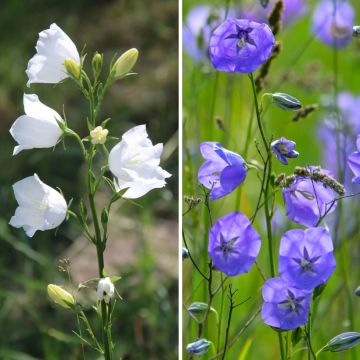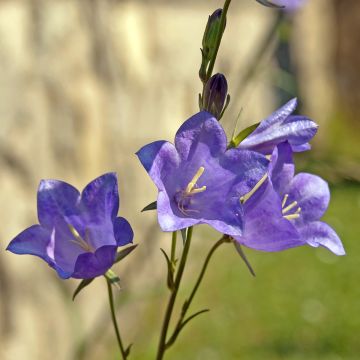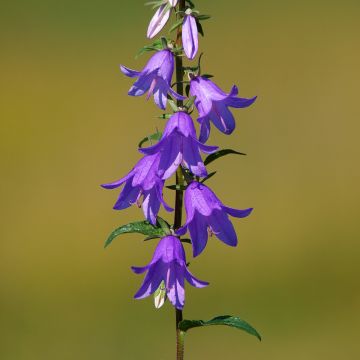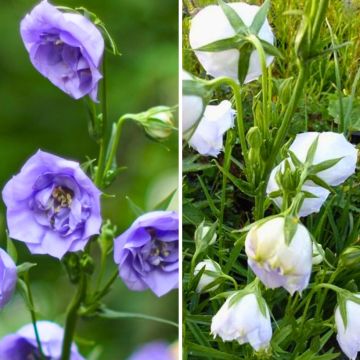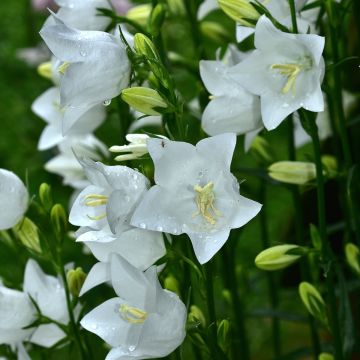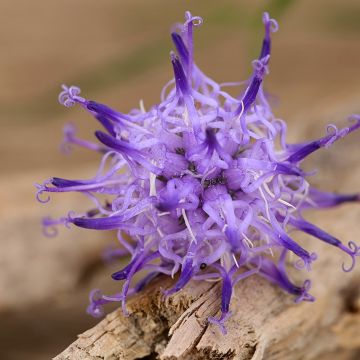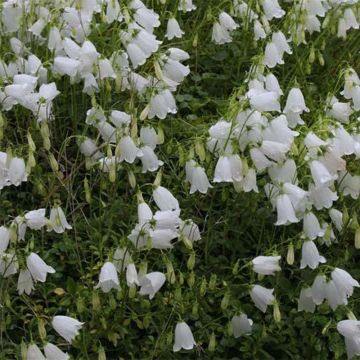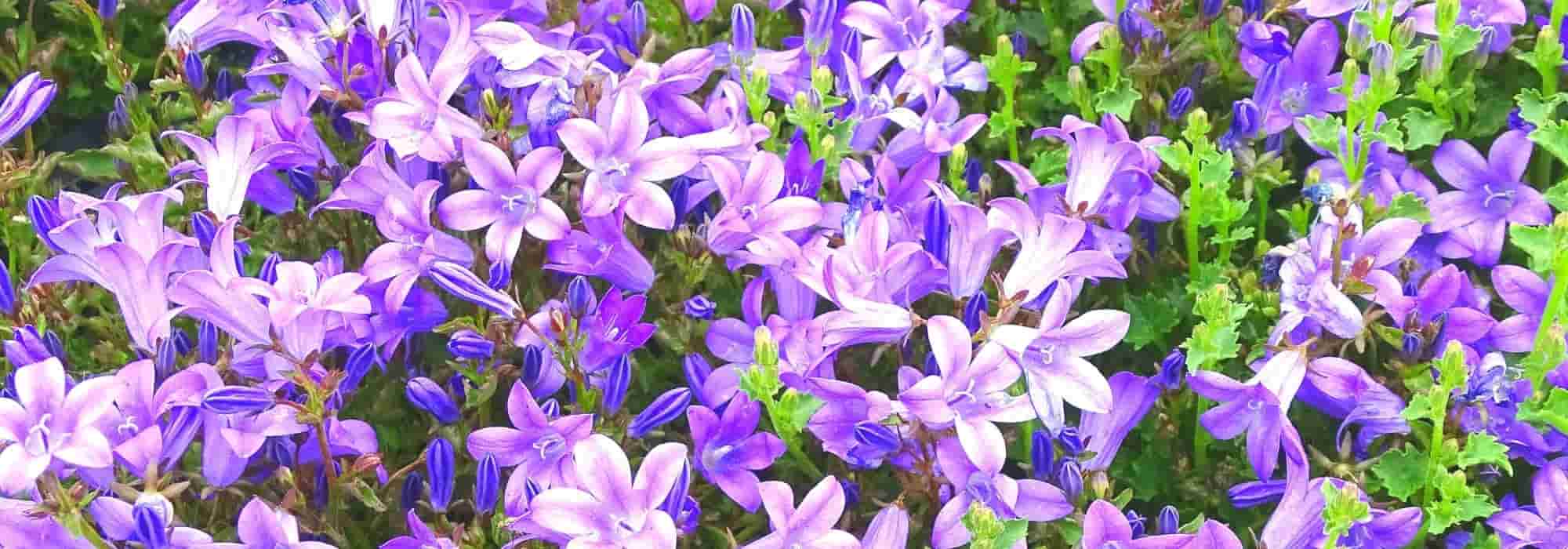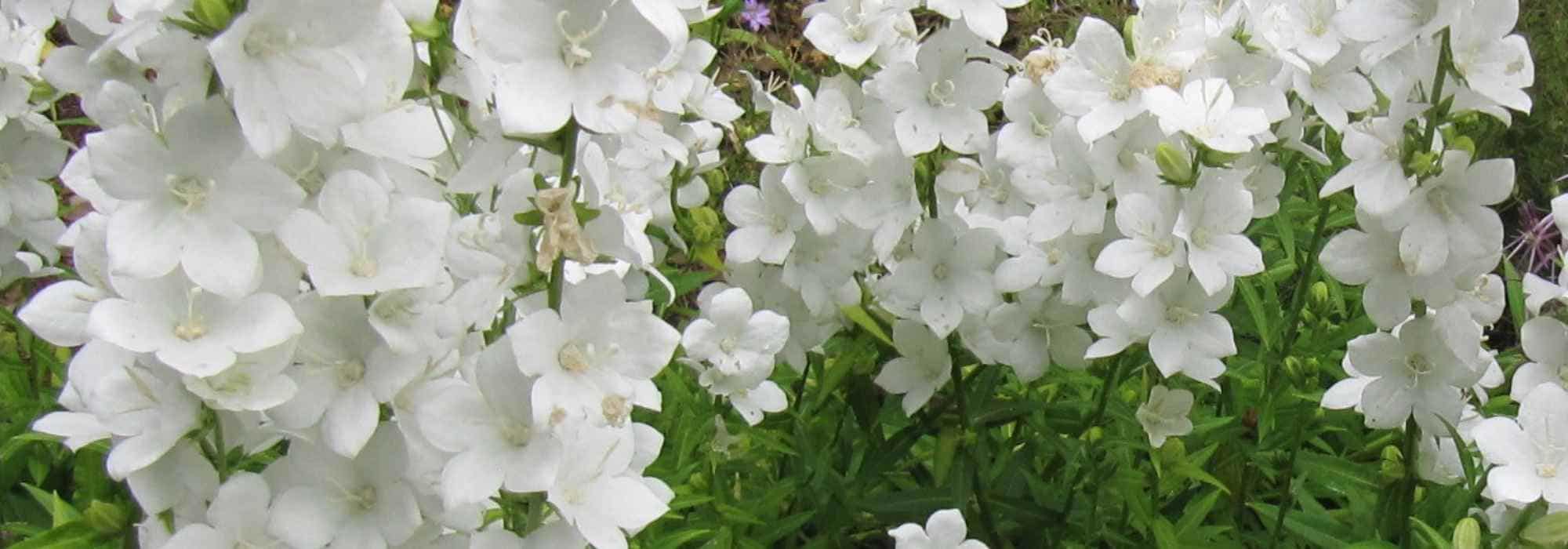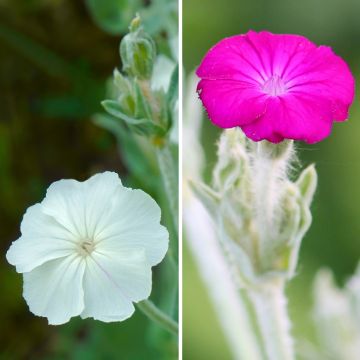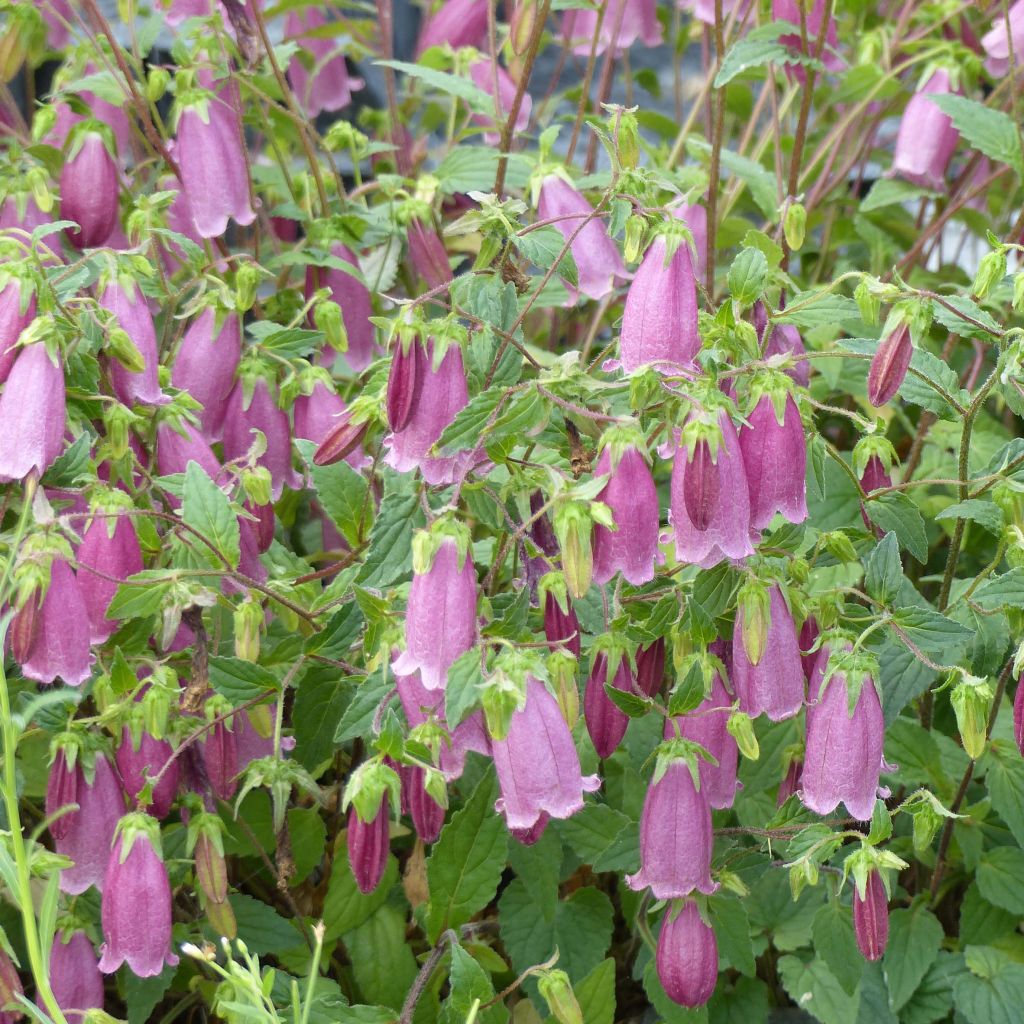

Campanula Ringsabell Mulberry Rose
Campanula Ringsabell Mulberry Rose
Campanula x takesimana Ringsabell Mulberry Rose
Korean Bellflower, Takeshima Bellflower, Korean campanula
I have serious doubts about the recovery of this young plant... tiny tiny leaves (less than 1cm (0in) tall) and a flower stem in the middle of them... I will get back to you if it doesn't recover... :-(
Camille, 30/05/2020
Special offer!
Receive a €20 voucher for any order over €90 (excluding delivery costs, credit notes, and plastic-free options)!
1- Add your favorite plants to your cart.
2- Once you have reached €90, confirm your order (you can even choose the delivery date!).
3- As soon as your order is shipped, you will receive an email containing your voucher code, valid for 3 months (90 days).
Your voucher is unique and can only be used once, for any order with a minimum value of €20, excluding delivery costs.
Can be combined with other current offers, non-divisible and non-refundable.
Why not try an alternative variety in stock?
View all →This plant carries a 12 months recovery warranty
More information
We guarantee the quality of our plants for a full growing cycle, and will replace at our expense any plant that fails to recover under normal climatic and planting conditions.
Would this plant suit my garden?
Set up your Plantfit profile →
Description
Campanula Ringsabell Mulberry Rose is a pink-flowered version of the Ringsabell hybrid bellflower series, slightly taller in flowers and faster growing than the blue variety. Its long pendulous bell-shaped flowers open in a dark pinkish-purple then mature to a softer, light pink. They are borne on slender stems above a cushion of dark green leaves that lie close to the ground. This vigorous, but not invasive variety looks stunning when planted en masse in borders or even in pots. It is easy to grow in any loose, moist soil, in full sun or partial shade. Use its flowers to create beautiful country-style bouquets.
Campanula Ringsabell Mullberry Rose belongs to the campanula family. This recent horticultural creation is derived from the species Campanula takesimana, the Korean Bellflower among others, but does not have its invasive character. The selection 'Ringsabell Mulberry Rose' spreads fairly rapidly but in reasonable proportions, forming cushions of leaves that are 15 cm (6in) high and 40 cm (16in) wide. Its quite wide, slightly cordate, toothed and glossy leaves, have a fairly dark green colour. They are gathered in compact basal rosettes that sometimes persist if the winter is mild, and turn red in autumn. From late May to July, thin stems, tinged with purple, covered with small leaves and 50 cm (20in) tall, rise from the basal tuft. They bend slightly under the weight of flowers grouped in dense clusters at their ends. These tubular and bell-shaped flowers are quite long (5 to 6 cm (2in)) compared to the size of the plant. The outside of the corolla has a satin appearance and an intense colour, deep pink, slightly lighter at the edges and becoming lighter as the hours go by.
Campanula Ringsabell Mullberry Rose is a very elegant plant, ideal in borders or along a path, planted en masse. It thrives in full sun or partial shade, outshining foamflowers, hostas, and trilliums, which are not always at their best in summer. It is great in a natural or romantic border, even for a novice gardener. It will be perfect in the company of other pretty and easy-to-grow perennials: perennial geraniums, red valerian (Centranthus ruber), phlox, purple coneflower, fennel, field scabious, queen of the meadow, hemp-nettle, perennial sweet pea, or lady's mantle. It also grows well in pots and its flowers hold up well in bouquets.
Campanula Ringsabell Mulberry Rose in pictures
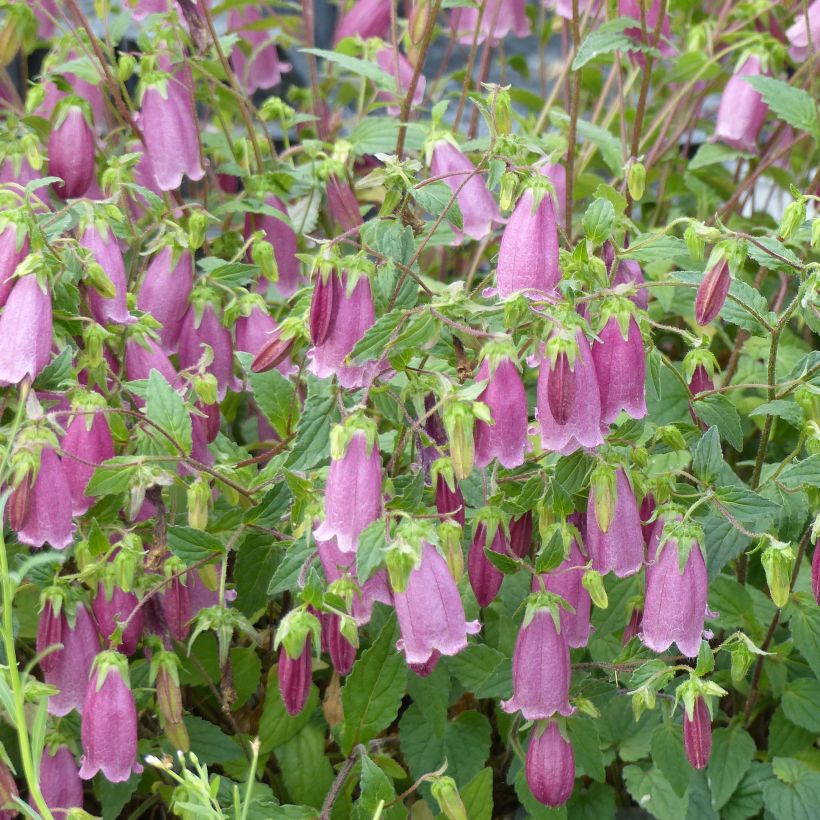

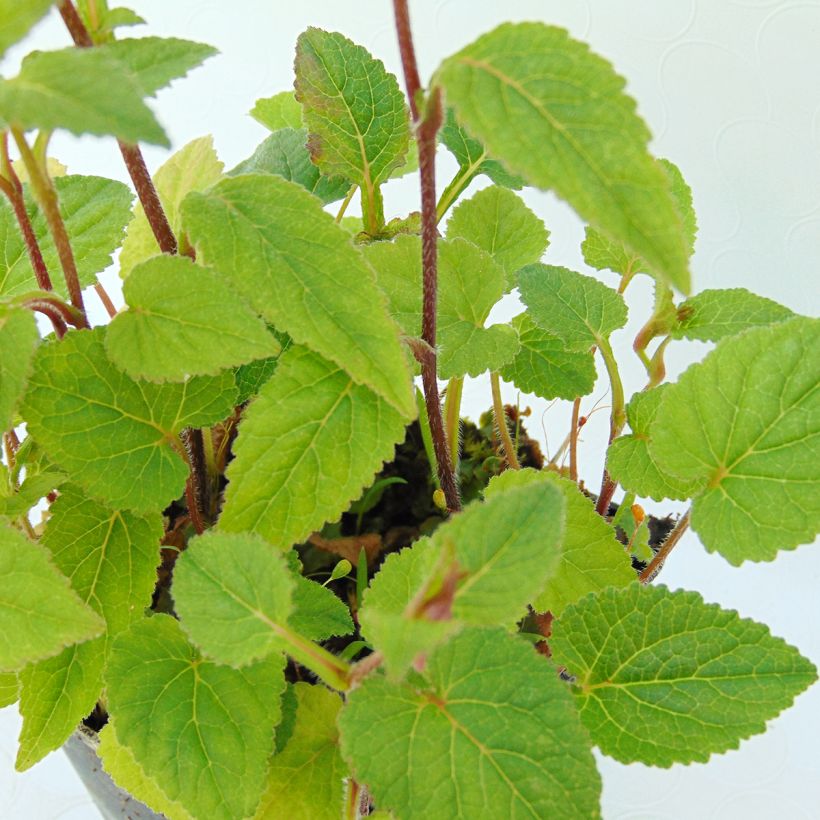

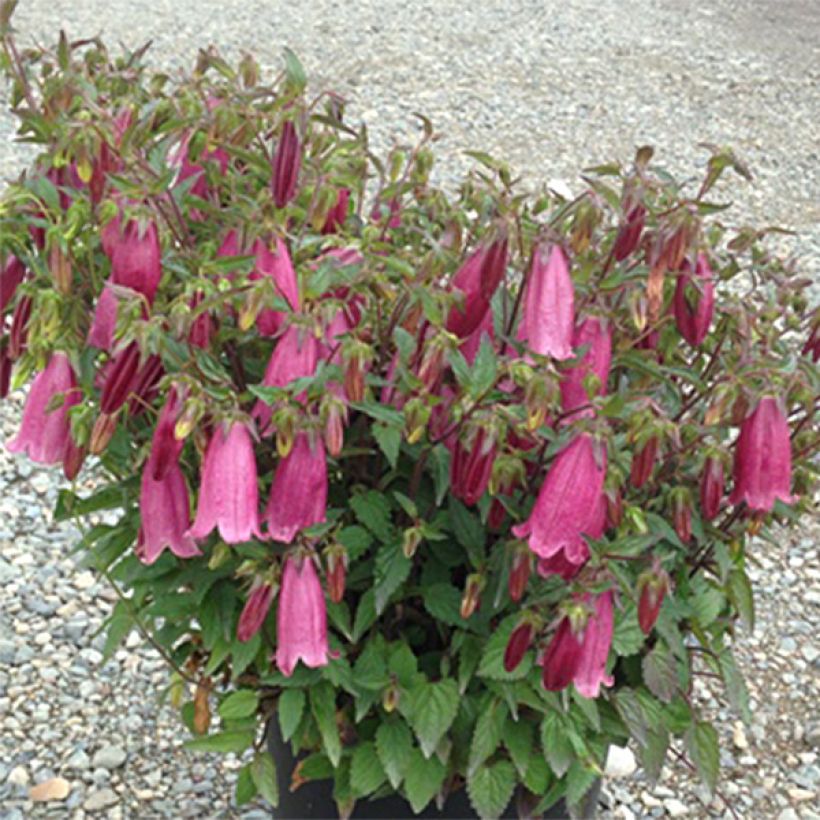

Flowering
Foliage
Plant habit
Botanical data
Campanula
x takesimana
Ringsabell Mulberry Rose
Campanulaceae
Korean Bellflower, Takeshima Bellflower, Korean campanula
Cultivar or hybrid
Other Campanula - Bell Flower
View all →Planting and care
A sunny or semi-shaded exposure is best for Campanula 'Ringsabell Mulberry Rose'. Plant in fertile soil, even clayey and chalky, properly drained and loosened and always moist. It is a hardy plant that is easy to grow. Cut back the stems after flowering to encourage a second flowering and to prevent self-seeding. Water in high heat or drought. Beware of slugs and snails in gardens and aphids and spider mites in greenhouses. Campanula can be susceptible to mildew in cool and humid weather but treatment is rarely necessary.
Planting period
Intended location
Care
Planting & care advice
-
, onOrder confirmed
Reply from on Promesse de fleurs
Similar products
Haven't found what you were looking for?
Hardiness is the lowest winter temperature a plant can endure without suffering serious damage or even dying. However, hardiness is affected by location (a sheltered area, such as a patio), protection (winter cover) and soil type (hardiness is improved by well-drained soil).

Photo Sharing Terms & Conditions
In order to encourage gardeners to interact and share their experiences, Promesse de fleurs offers various media enabling content to be uploaded onto its Site - in particular via the ‘Photo sharing’ module.
The User agrees to refrain from:
- Posting any content that is illegal, prejudicial, insulting, racist, inciteful to hatred, revisionist, contrary to public decency, that infringes on privacy or on the privacy rights of third parties, in particular the publicity rights of persons and goods, intellectual property rights, or the right to privacy.
- Submitting content on behalf of a third party;
- Impersonate the identity of a third party and/or publish any personal information about a third party;
In general, the User undertakes to refrain from any unethical behaviour.
All Content (in particular text, comments, files, images, photos, videos, creative works, etc.), which may be subject to property or intellectual property rights, image or other private rights, shall remain the property of the User, subject to the limited rights granted by the terms of the licence granted by Promesse de fleurs as stated below. Users are at liberty to publish or not to publish such Content on the Site, notably via the ‘Photo Sharing’ facility, and accept that this Content shall be made public and freely accessible, notably on the Internet.
Users further acknowledge, undertake to have ,and guarantee that they hold all necessary rights and permissions to publish such material on the Site, in particular with regard to the legislation in force pertaining to any privacy, property, intellectual property, image, or contractual rights, or rights of any other nature. By publishing such Content on the Site, Users acknowledge accepting full liability as publishers of the Content within the meaning of the law, and grant Promesse de fleurs, free of charge, an inclusive, worldwide licence for the said Content for the entire duration of its publication, including all reproduction, representation, up/downloading, displaying, performing, transmission, and storage rights.
Users also grant permission for their name to be linked to the Content and accept that this link may not always be made available.
By engaging in posting material, Users consent to their Content becoming automatically accessible on the Internet, in particular on other sites and/or blogs and/or web pages of the Promesse de fleurs site, including in particular social pages and the Promesse de fleurs catalogue.
Users may secure the removal of entrusted content free of charge by issuing a simple request via our contact form.
The flowering period indicated on our website applies to countries and regions located in USDA zone 8 (France, the United Kingdom, Ireland, the Netherlands, etc.)
It will vary according to where you live:
- In zones 9 to 10 (Italy, Spain, Greece, etc.), flowering will occur about 2 to 4 weeks earlier.
- In zones 6 to 7 (Germany, Poland, Slovenia, and lower mountainous regions), flowering will be delayed by 2 to 3 weeks.
- In zone 5 (Central Europe, Scandinavia), blooming will be delayed by 3 to 5 weeks.
In temperate climates, pruning of spring-flowering shrubs (forsythia, spireas, etc.) should be done just after flowering.
Pruning of summer-flowering shrubs (Indian Lilac, Perovskia, etc.) can be done in winter or spring.
In cold regions as well as with frost-sensitive plants, avoid pruning too early when severe frosts may still occur.
The planting period indicated on our website applies to countries and regions located in USDA zone 8 (France, United Kingdom, Ireland, Netherlands).
It will vary according to where you live:
- In Mediterranean zones (Marseille, Madrid, Milan, etc.), autumn and winter are the best planting periods.
- In continental zones (Strasbourg, Munich, Vienna, etc.), delay planting by 2 to 3 weeks in spring and bring it forward by 2 to 4 weeks in autumn.
- In mountainous regions (the Alps, Pyrenees, Carpathians, etc.), it is best to plant in late spring (May-June) or late summer (August-September).
The harvesting period indicated on our website applies to countries and regions in USDA zone 8 (France, England, Ireland, the Netherlands).
In colder areas (Scandinavia, Poland, Austria...) fruit and vegetable harvests are likely to be delayed by 3-4 weeks.
In warmer areas (Italy, Spain, Greece, etc.), harvesting will probably take place earlier, depending on weather conditions.
The sowing periods indicated on our website apply to countries and regions within USDA Zone 8 (France, UK, Ireland, Netherlands).
In colder areas (Scandinavia, Poland, Austria...), delay any outdoor sowing by 3-4 weeks, or sow under glass.
In warmer climes (Italy, Spain, Greece, etc.), bring outdoor sowing forward by a few weeks.






























